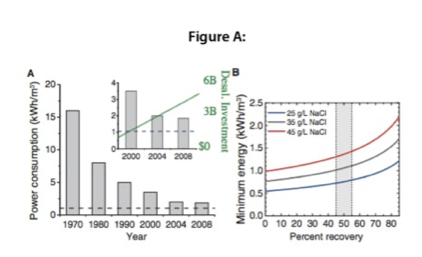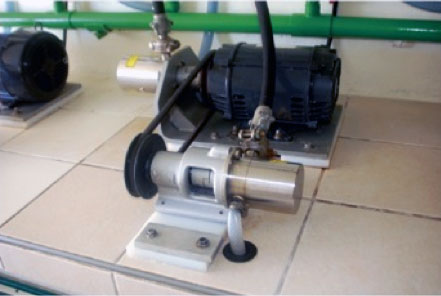Desalination Will Be Necessary
A 40% gap between freshwater supply and demand is predicted by 2030, and the stress on natural water systems can be seen now in every part of the world. In addition to all methods of water recycling and conservation, new sources will be necessary. Seawater is the only sources that is drought-proof and virtually inexhaustible. Unfortunately, purifying seawater is also the most energy-intensive way to provide freshwater today. Desalinated water typically costs four to eight times more to produce than other sources, with energy often accounting for more than half of the operational costs.
Further Energy Reductions Are Limited by Physics
Reducing desalination costs has centered around energy efficiency. Reverse Osmosis (RO) has emerged as the leading process with over 60 years of technological advancements. Current water shortages have drawn more attention and investment than ever to RO efficiency. However, all methods of desalination are bound by laws of thermodynamics that require a minimum energy level to separate a pure liquid from its dissolved minerals. This limitation explains the reduced rate of efficiency improvements despite record investment seen in Figure A. There are decreasing opportunities to improve efficiency as the process gets closer to the minimum energy requirement.
 As power consumption approaches the minimum energy requirement (the dotted line on the graph), there are less opportunities for improvements. Figure B shows how salt concentrations and Reverse Osmosis recovery rates affect the minimum energy requirement.
As power consumption approaches the minimum energy requirement (the dotted line on the graph), there are less opportunities for improvements. Figure B shows how salt concentrations and Reverse Osmosis recovery rates affect the minimum energy requirement.
Given this limitation, we suggest that too much attention may be presently channeled into improving the efficiency of membranes, pumps, and energy recovery devices (ERDs) and not enough to reduce desalination costs by integrating water production with the availability of cheap energy.
This post was an excerpt from ‘Demand Response Desalination‘
 Water Energy News News about the interdependency of water and energy
Water Energy News News about the interdependency of water and energy
